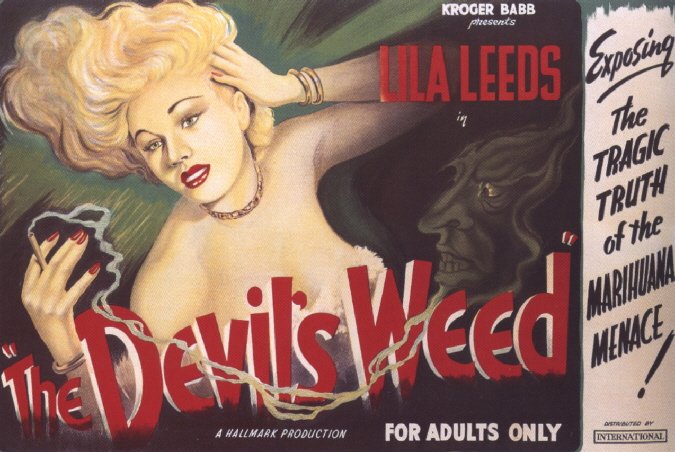.jpg)
Ever wondered why there's so much contention around what you call weed? If you haven't, you might want to pay attention so that you don't accidentally offend anyone or even purchase the wrong product. That's right, there have been reports of differences in standard of quality and source plant between extracts marketed as marijuana extract. Although if you ask me, I think that might just be people accidentally buying hemp instead of cannabis products. The real reason you should just call it cannabis is one of historical value.
You may have heard now that officially we've all been calling pot by the wrong name. Well that's entirely accurate, the proper Latin name for the plant is Cannabis Sativa, but don't you wonder why nobody you know calls it that? If you don't live in the states you might have no reason might find that strange. Of course people from all around the world have given many different names to the cannabis plant, nowhere has any of it's nicknames stuck better than "marijuana" in America. This is no accident, the term cannabis was widely used before 1920, the plant and its extracts were legally included in patent medicines. In the next decade, the propaganda of two men would write the narrative of negative sentiment that still haunts cannabis a century later.
The year 1933 marked the end of the "Prohibition era" in America, it also marked the start of a new campaign for Harry Jacob Anslinger, the head of the formerly known Bureau of Prohibition, now Federal Bureau of Narcotics (lovingly known today as the Drug Enforcement Agency). This position by the way, was bestowed to him by U.S. Secretary of the Treasury Andrew Mellon, just one year after Anslinger's marriage to Mellon's daughter. Anslinger spoke out about how there is no greater fallacy than the idea that cannabis makes people violent or crazy, that was before 1930. When prohibition ended and the Bureau of Prohibition was reformed into the department of narcotics, Ansliger's attitude towards cannabis changed. Once it served him to do so, he began mounting a campaign against the use of cannabis. Alongside his propaganda he spread racially-charged anecdotes and fictitious tales tying the his twisted idea of cannabis to the targets American racism and vice versa. You're probably not very surprised to find out that this campaign was amazingly successful. Would it shock you though to know Americans bought into this despite the fact that there was already strong evidence of the plant’s medicinal value, and a written submission from the American Medical Association objecting to the proposed ban? Just think of all the research we could have already if we had started studying cannabis in 1930.
Anslinger's strategy focused on referring to the plant not by its proper name (Cannabis) but rather the slang term “marijuana”. Under it's new title, Anslinger would build a reputation for it, charging the term with visions of violent, drug-addled miscreants committing crimes against the good people of America fueled by the horrible drug marijuana. A direct quote from Anslinger writes “There are 100,000 total marijuana smokers in the U.S. and most are Negroes, Hispanics, Filipinos and entertainers. Their satanic music, jazz and swing, result from marijuana use. This marijuana causes white women to seek sexual relations with Negroes, entertainers and any others.” In 1936 and 1937, Anslinger had a hand in the production of anti-pot propaganda films such as Marihuana, Assassins of Youth, and most famously Reefer Madness, which depicted pot as a substance that could transform a young girl into a reckless harlot and, in just one puff, trigger actions that could lead to multiple fatalities. This media blitz happened to coincide with the push to pass the Marijuana Tax Act of 1937, which became the first effective nationwide pot ban.
Anslinger's quest didn't end there, and like I said before he didn't do all of this by himself. William Randolph Hearst had built the largest newspaper chain and media company in the nation, he has also been remembered as a vicious racist with a special hatred for Mexico and their people due apparently to the 800,000 some acres he lost to Pancho Villa. Heavily invested in the timber industry, Hearst hated cannabis, he saw it as a threat to his fortune. Hearst saw unwanted competition from hemp based paper, and opportunistically lumped industrial hemp with psychoactive cannabis in his own public campaign against the evil weed. The two worked together as Anslinger worked on the side as a regular editorial contributor, Hearst said himself, “Users of marijuana become STIMULATED as they inhale the drug and are LIKELY TO DO ANYTHING. Most crimes of violence in this section, especially in country districts are laid to users of that drug.”

The narrative started by Harry Jacob Anslinger and William Randolph Hearst was cemented into U.S. drug policy and the minds of generations of Americans. We are only now beginning to glimpse what could be the end of their legacy. One by one states have begun legalizing cannabis, as though the entire nation is realizing it's been duped. However the lies that are still told and the false beliefs about cannabis will take decades rectify. Don't believe me? Watch this awesome video by Willie D and pay attention to how Anne Coulter responds to a question about weed.
Many people are gonna argue that we need to start only referring to the plant as cannabis, otherwise it will never be taken seriously and it will never be completely legalized or decriminalized. That may be the case, and it's up to you to decide what you want to call it. Just be careful, millions of people call it marijuana every day without understanding the hate and conspiracy behind it.